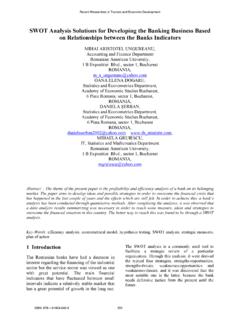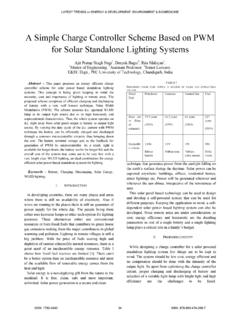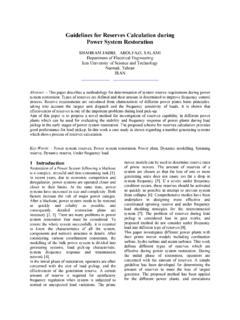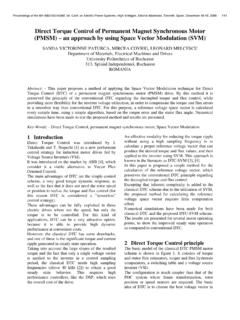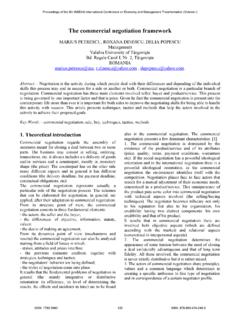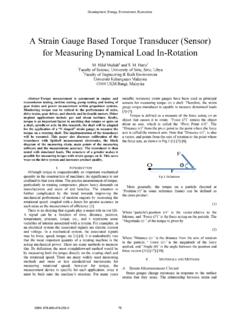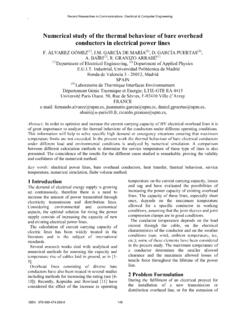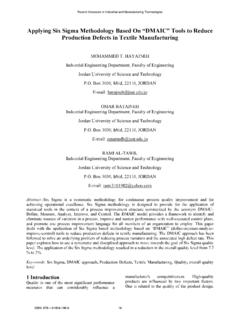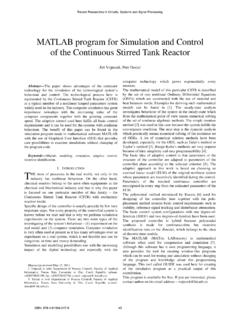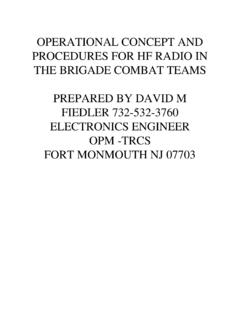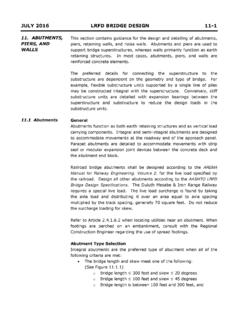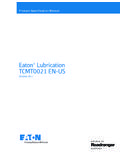Transcription of PCB Thermal Design Improvement Through Thermal Vias
1 PCB Thermal Design Improvement Through Thermal Vias NADEZHDA KAFADAROVA, ANNA ANDONOVA Department of Microelectronics Technical University of Sofia 1797 Sofia, 8, Kl. Ohridski str. BULGARIA Abstract: - An approach based on Design of different experiments for Improvement the Thermal paths in PCB Through Thermal vias is offered. An efficient Thermal via placed on the PCB decreases the junction temperature of the package. In this paper elaborate study has been done in analyzing the effect of Thermal vias and the ways to decrease the junction temperature by given number of computations. Thermal enhancement has been achieved by running the Thermal simulations with and without Thermal vias.
2 Temperature profiles have been plotted in FLOTHERM. The Thermal enhancement study focuses on the importance of Thermal vias to a great extent. The simulation models are validated with experiments. Key-Words: - Thermal simulation, CFD, PCB, Thermal vias, Thermal resistance, Thermography 1 Introduction As Thermal problems become more evident, new physical Design paradigms and tools are needed to manage them. Such problems as increased interconnect delays, power consumption and temperature, all of which can have serious implications on reliability, performance, and Design effort. The Thermal resistance between junction-to-ambient ( JA) is highly dependent on the PCB (Printed Circuit Board) Design factors.
3 This becomes more critical for packages having very low Thermal resistance between junction-to-case. JA is used to characterize the heat dissipation ability of a package/board system from the die Through the PCB board to the ambient environment. As the Thermal resistance from PCB board to ambient is much larger than that from die to board, it is more significant to study the effect of the PCB board Design on the Thermal resistance JA in detail. The idea of using Thermal vias to solve Thermal problems is not new [1]. The use of Thermal vias in packaging is implemented by two different methods.
4 The first one is that the one end of via is attached to the bottom substrate, and the other is attached to the top substrate with a hole Through to the substrate. The other is that the one end of via is attached to the top die, and the other is attached to the bottom die with a hole to the die. The Thermal solution of vias depends on the Thermal resistance. The various via configurations based on the first method of packaging will be analyzed. The relationships between Design parameters and the Thermal resistance of Thermal via clusters in PCBs were determined by simplifying the via cluster into parallel networks.
5 It has become of particular interest to Design efficient heat conduction paths right into a PCB/MCM/chip to eliminate localized hot spots directly. Despite all the work that has been done in evaluating Thermal vias, Thermal via placement algorithms are lacking even with 2D PCB. As circuits and temperature profiles increase in complexity, efficient algorithms are needed to accurately determine the location and number of Thermal vias [2]. An approach based on Design of different experiments for Improvement the Thermal paths in PCB Through Thermal vias is offered. 2 CFD Simulations of Conduction Paths for Thermal Vias Impovement It is well known that the Thermal resistance of the package, especially, JA, is highly dependent on the PCB in which the parts are mounted for Thermal testing.
6 The effect of the PCB is more critical when the package has extremely low JC (or Thermal resistance between junction-to-case) because the Thermal resistance between case to PCB, and PCB to ambient air, becomes more dominant than that between die to package case [3]. The remaining conduction paths extend from the device into the rest of the layers (both copper and dielectric) Through the Thermal vias underneath the device. These conduction paths, if optimized Through proper Design of the Thermal via array, are the most efficient paths in the structure for removing heat from the device. When considering the Design of the Thermal via array, it is helpful to first identify an ideal structure for the purpose of heat conduction.
7 After the theoretical ideal is established, the system designer can attempt to Design in a more practical structure that will closely replicate the ideal structure. All of the vias arrays are arranged to be on a regular pitch on a matrix pattern. The vias matrices vary from no RECENT ADVANCES in CIRCUITS, SYSTEMS, ELECTRONICS, CONTROL and SIGNAL PROCESSINGISSN: 1790-5117241 ISBN: 978-960-474-139-7vias (0 x 0) to a large 4 x 4 array and the vias numbers vary from 0 to 16. Different location of Thermal vias and the vertical and horizontal distances between the Thermal vias are studied: once with the same distances of 0,8 mm between the Thermal vias and other with different vertical of 2 mm and horizontal of 0,8 mm distances between the Thermal vias respectively.
8 In Table1 are given different types of Thermal via structures. The Thermal via structures for the purpose of heat conduction investigations of PCB Stucture Ideal type copper slug First type solder slug Second type air slug View with two Cu laers In Table 2 the Design of experiment parameters for CFD simulation are shown. Parameters for CFD simulation (KCu=385W/mK; KNi =59W/mK; KFR4=0,4 W/mK; KSn63= 50,9W/mK) PCB area 576 mm2 (24 mm x 24 mm) FR4 thickness 1,2 mm Device dimensions 20mm x 20 mm x 1,5 mm Diameter of the via, mm 0,8 1 2 Vias array, XxY 2x2 3x3 4x4 Copper thickness, mm 0,04 0,08 0,12 Power dissipated,W 1 2 3 Ambient temperature, 0C 20 40 60 Number of Cu layers 2 3 4 The number and size of the vias are limited by the size of the Thermal pad and the capabilities of the PCB manufacturer, making their Design relatively straightforward.
9 For reliability in the manufacturing process, the drill diameter of the vias should be no less than 0,25 mm, and the center-line of the vias should remain 0,9 mm away from the edge of the Thermal pad and from each other. It would seem that, since the purpose of adding this via structure is to replicate a solid copper slug, the designer should add as many vias as possible. The value of the Thermal conductivity, K, in any particular direction corresponds to the density of Thermal vias that are arranged in that direction. Increasing the number of Thermal vias in one direction increases the Thermal conductivity in the other directions but in the direction of the smaller magnitude.
10 For simplicity, the interdependence can be considered to be negligible, and the K s in the x, y, and z directions can be considered to be independent to a certain extent. The percentage of Thermal vias, m, (also called Thermal ensity) in a Thermal via region is given by the equation: via dfollowing (1) where n is the number of individual Thermal vias in the region, Avia is the cross sectional area of each Thermal via, w is the width of the region, and h is the height of the region. The relationship between the percentage of erma and the effective vertical Thermal thl viasconductivity is given by: 1 (2) where Kvia is the Thermal conductivity of the via material and Klayerz is the Thermal conductivity of the region without any Thermal vias.
